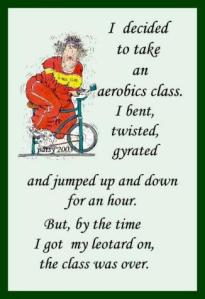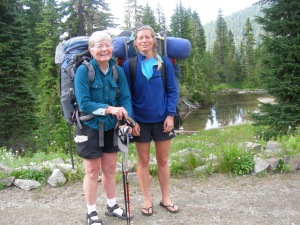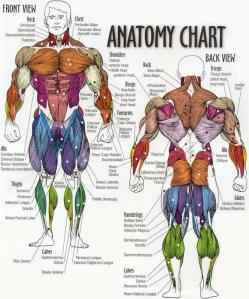Does it matter what I eat?
You bet it does. But what specific dietary precautions a person needs to take to ease painful arthritis depends on a number of conditions. First of all, there are 5 types of arthritis:
Degenerative (Osteoarthritis)
Inflammatory (rheumatoid arthritis, allergic autoimmune)
Toxic (gout)
Traumatic (old fractures, etc)
Infection (Lyme disease)
There are many web sites where you can study and learn what experts have to say about diet and arthritis. One that I found particularly helpful is found on the WebMD website as the authors have researched the science behind popular dietary recommendations, affirming some and debunking others. I will not go into great detail about specific dietary strategies as there are so many resources available to you. I will offer my own experiences with various dietary interventions and especially with the supplements I have found to be helpful.
I started out with a medically induced arthritis in my knees caused by an anti-biotic. Let’s classify that as an inflammatory arthritis. I was a teenager, stressed out and sick with a serious sinus infection. If arthritis results from a weakened immune system, it is perhaps not surprising that the anti-biotic kicked off the symptoms. (Details of this are in my last post)
Foods that support a strong immune system are discussed, listed, touted, advertised on bill boards, radio, TV, newspapers, talk shows, pod casts and Face Book side bar ads. Do we not know what they are? Of course. Fresh organic fruits and vegetables, especially dark leafy green ones like Chard, Collard and mustard greens, asparagus, and bring on the color: carrots, beets, black berries, blue berries, cantaloupe. Protein from lean sources like lamb, chicken, fish provides the essential building blocks. Minerals like zinc are particularly instrumental in the immune battle of attack on bacteria or viruses.
There is no excuse for ignorance on this topic in today’s world. I googled “foods for immune support” and Whole Foods came up top with its thorough general article on the immune system and foods that keep it functioning. Whole Foods sends daily health tips including detailed articles on every vegetable and fruit under the sun and that specific food’s contribution to your health. My friend and massage therapist Kate McCoy sends these articles on to her client list. Thank you, Kate.
Back in 1954, we didn’t have all these details, but we knew to eat liver once a week, take cod liver oil, have several servings of brightly colored fruits and vegetables every day. Today’s 5th graders all watch the movie Supersize Me. They know the consequences of a poor diet.
Do we make the right choice? Do they?
Consider traumatic arthritis, the kind that results from injury, my second type of arthritis. A herniated disc results in arthritis eventually if not immediately. Doctors expect injury to bring on arthritis. I remember jumping down from a high fence after this herniation. I needed a short cut and chose to scale a chain link fence about 6 ft tall and drop down on the other side. Because the nerves in my left leg were no longer functioning, it did not do that springy little bounce when I hit the ground and the top of the tibia broke. I drove myself to the emergency room. While discussing with the orthopedist at the University of Washington hospital whether surgery would be necessary, he looked right at me and predicted “You’ll have arthritis in this knee in a couple years and be in here for a knee replacement in 10 years.”
I still have the original knee and have no arthritis in it 20 years later.
I attribute the healthy and long lasting recovery from that knee break and an ankle break while cross country skiing in 1997 to some very specific dietary interventions in the form of supplements. Every time your body suffers a major trauma like this, there is a lot of inflammation. “ Inflammation is the body’s healthy response to infection, tissue damage or both. By sending increased amounts of white blood cells to the injured area, the body is better able to repair any damage. Without the inflammation process, injuries would not heal. Most holistic health practitioners feel that taking anti-inflammatory pharmaceutical drugs in fact masks and hence lessens the chances of proper healing.” Quoting from Michelle Schoffro Cook’s Healing Soft Tissue Injury the Natural Way 
There is an appropriate time for anti inflammatory drugs, probably in the first 48 to 72 hours, but after the initial easing of the situation, allowing the white cells to do their job and assisting with the removal of the damaged tissue naturally has a much greater healing effect. I used copious amounts of Lecithin and Alfalfa. Lecithin is an emulsifier, so it makes more liquid any sticky clumps of damaged cells thus helping them flow more easily into the blood stream and out in the waste. Alfalfa is a natural anti-inflammatory bringing minerals to the affected area in ways not fully understood. Vitamin C helps rebuild the cellular integrity in the damaged area as C is the main component of collagen, the stuff that makes the cell wall strong. These supplemental nutrients plus daily exercises, sitting on the floor and doing leg raises with the cast on helped me come out of 3 months non-weight bearing with almost no muscle tone loss. The swelling subsided quickly because of the supplements. I’d say my left leg is as strong as the right one today even after these two injuries.
The final arthritis I’m going to consider from a dietary point of view is osteoarthritis, by far the most common for people as we age. This is simply the result of living beyond our joints’ ability to keep us moving. The joints, especially the knees and hips, wear out. The soft cushion that protects the joint wears down and the bone itself thickens. Bone on bone is that awful grinding that makes getting up and down the stairs impossible and kills the hip with every upward step. Those of us who use our bodies hard with hiking and skiing, running and bending and lifting, wear the joints down even before we think we might be getting old.
Since one in five people in the US today have arthritis, you can bet there are a million stories about what foods help. A friend of mine who had a cherry orchard in Eastern Washington swore that 10 dried cherries every day kept her from having arthritis pain. How is a person to decide? Trying out 10 dried cherries a day to see how that works for you isn’t a very expensive or challenging proposition. I’m going to pass on a few more that are easy to try out. But first.
First and foremost, you must do everything you can to get to your best weight. Even 10 pounds less will help your suffering joints. If you don’t think it matters that much, try carrying around 10 lbs of flour or potatoes for a couple hours and see how your knees, hips and back hold up.
The food claims—fact or fiction—that help from the article mentioned above includes a few references with which I have personal experience. I’ll share them here.
Nightshade plants. Some people seem to get relief when they eliminate the nightshade plants which include tomatoes, egg plant, potatoes and peppers. I have tried this and it doesn’t seem to make any difference. However, during one period of particularly bad pain in my lower back from spinal stenosis and osteoarthritis, I evaluated my dietary intake and realized I had greatly increased my seasonal intake of potatoes and peppers. I cut them out for a couple weeks and did notice improvement. There is no scientific evidence to support the claim that the nightshade plants cause arthritis pain. Just experiment and see if you are helped when you eliminate these foods.
The Alkaline Diet. “The alkaline diet presumes both OA and RA are caused by too much acid. Among the foods it excludes are sugar, coffee, red meat, most grains, nuts, and citrus fruits.” I have subscribed to this theory and perhaps felt some relief. Going back to grains, nuts and fruit did not make the arthritis worse. There are no scientific studies to support this theory. From my own experience, when I eliminate sugar and white flour in all its delicious forms, my joints do much better. And my weight has been stable at its ideal level for years now. It is true that during the holidays, when the tasty pies and cookies show up and I enjoy more than one piece for several days on end, I generally suffer from stiffer joints, more painful limbs and a fuzzy brain as well. Try doing without refined white flour for a month and see how you feel. You might be surprised and you’ll certainly drop a pound or two. Need help identifying aklaline and acid foods? ACID&ALKALINEchart Bevacqua 3-04 (2).pdf is a chart that will help.
Vegetarian Diet. Especially people suffering from rheumatoid arthritis get relief when they switch to a vegetarian diet and that relief remains pretty constant over time. I followed a vegetarian diet for several years after being diagnosed with breast cancer at age 34, and ran myself completely in the ground, became extremely anemic and exhausted all the time. I had no idea how to eat a healthy vegetarian diet. Now that I know more about all the wonderful ways you can get complete protein, I might not be so adversely effected. When I talk with vegetarians who depend on cheese and pasta, I shudder to think of their joints. There is a science to getting all the nutrients you need, especially that chief building block, protein, from a vegetarian diet, so get the knowledge you need to eat well.
Switching fats. Probably the most helpful of the popular suggestions is this one. Get off butter and corn oil and switch to olive oil. Omega 3, fish oil, borage oil, Evening Primrose Oil, and Flax seed oil really do make a difference to cranky joints. Butter just congeals. You’d be surprised how much you can come to enjoy olive oil over butter and you’ll love the results in your joints.
Green Tea. I was not expecting this in the list, even though I have known about the benefits of a Pomegranate Green Tea that I have been drinking for a couple years now. Combining green, red, white and red tea in a power that can be taken in hot water or cool has a 2 page of beneficial properties not the least of which is joint comfort. There is evidence in the scientific community to back the claim that green tea helps with arthritis.
Chondroitin and Glucosamine Many take supplements containing these together and get some relief. In a fascinating article on an Orthopedics web site, I learned how glucosamine and chondroitin work.
“Glucosamine and chondroitin are two molecules that make up the type of cartilage found within joints. Inside your joints, cartilage undergoes a constant process of breakdown and repair. However, to be properly repaired, the building blocks of cartilage must be present and available. The theory behind using the glucosamine and chondroitin joint supplements is that more of the cartilage building blocks will be available for cartilage repair.
- Glucosamine is a precursor to a molecule called a glycosaminoglycan-this molecule is used in the formation and repair of cartilage.
- Chondroitin is the most abundant glycosaminoglycan in cartilage and is responsible for the resiliency of cartilage.
Treatment with these joint supplements is based on the theory that oral consumption of glucosamine and chondroitin may increase the rate of formation of new cartilage by providing more of the necessary building blocks.”
Unfortunately supplemental use of glucosamine and chondroitin “ has not been shown to alter the availability or quantity of these cartilage building blocks inside an arthritic joint.”
Long term users of these supplements do experience less pain and often can discontinue the NSAIDS medications.
The joint health supplements I take are manufactured by the Shaklee Corp. Their scientists have also found no evidence that chondroitin taken orally increases cartilage. Their product uses boswellia, a botanical that interferes with the damaging action of chemicals in our body that attack cartilage. New research suggests that chondrotin interferes with the absorption of glucosamine, the primary building block of new cartilage. Adding boswellia may indeed deliver more of these glucosamine building blocks to the joints where they can actually build new cartilage. Shaklee’s glucosamine is shell fish free and has C, zinc, cooper and manganese, all helpful in supporting healthy connective tissue.
I hope these comments have been helpful and have added to your own research into dietary and supplemental help for arthritis. The most important take away is weight management. Amongst my hiking and cross-country skiing buddies, most of us in our late 60s and 70s, most of us are at our healthy weight. We are still moving well. However, joints have begun to wear out and one of our group had a hip replacement last year. She is back hiking and skiing with us. Age takes its toll, but good diet, healthy weight and continued exercise can keep the aging joints moving.
In my next post I will consider pain relief. I’ll be back after a brief hiatus enjoying the sun on the Mayan Riviera.
Be Well, Do Well, Keeping Moving.
Betsy Bell
Betsy Bell’s Health4U
www.hihohealth.com






 looked at my Magnetic Resonance Imaging—MRI, he declared my bones to be poor candidates for surgery. They already looked worn out at age 53.
looked at my Magnetic Resonance Imaging—MRI, he declared my bones to be poor candidates for surgery. They already looked worn out at age 53.